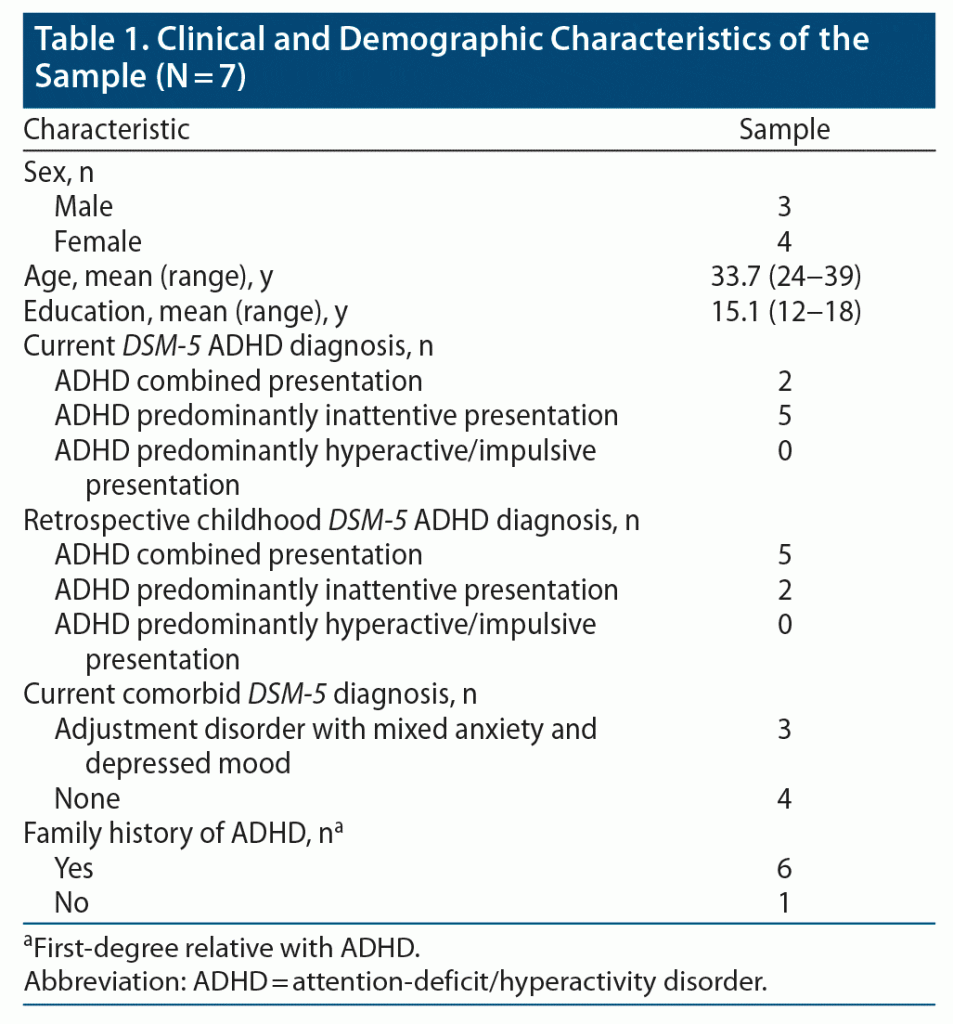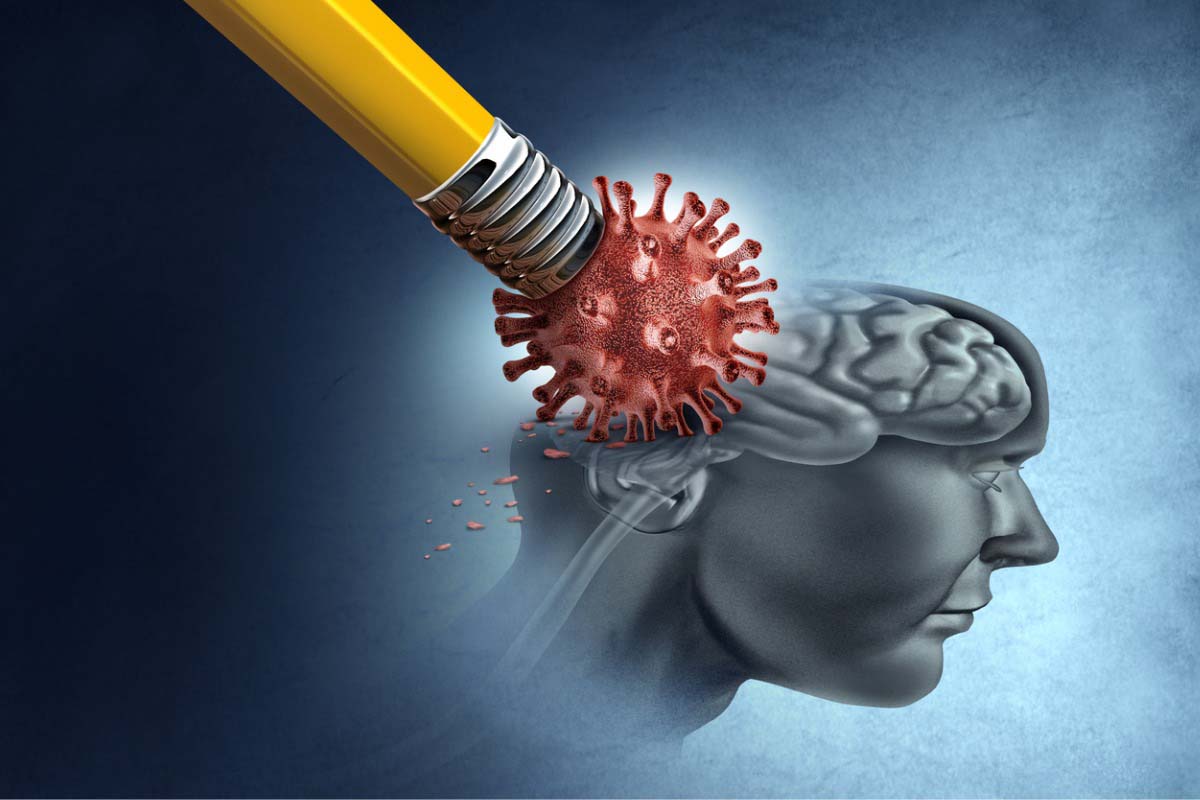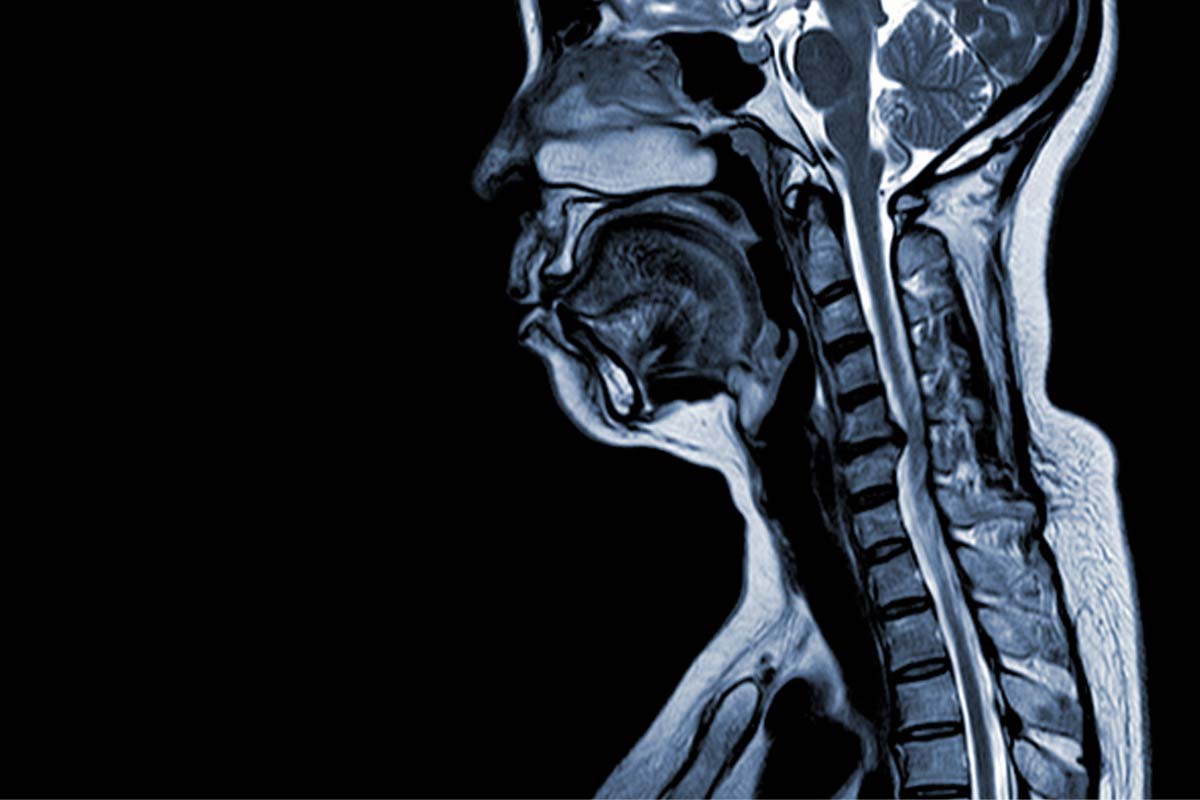
Prim Care Companion CNS Disord 2022;24(5):22br03356
To cite: Rivas-Vazquez RA, Ramirez-Mejia C, Diaz S. Undiagnosed adult attention-deficit/hyperactivity disorder detected during the COVID-19 pandemic. Prim Care Companion CNS Disord. 2022;24(5):22br03356.
To share: https://doi.org/10.4088/PCC.22br03356
© 2022 Physicians Postgraduate Press, Inc.
aFirst Choice Neurology, Miami, Florida
*Corresponding author: Rafael A. Rivas-Vazquez, PsyD, First Choice Neurology, 8940 North Kendall Dr, Ste 802-E, Miami, FL 33176 ([email protected]).
Attention-deficit/hyperactivity disorder (ADHD) is a neurodevelopmental disorder manifested during childhood, but frequently persisting into adulthood. Prevalence rates for ADHD are estimated at 5% during childhood and 2.5% during adulthood, suggesting that approximately half of children with ADHD will continue to meet criteria into adulthood.1 Despite being relatively common and treatable, ADHD is often undiagnosed in adults, placing these individuals at risk for academic, occupational, and interpersonal difficulties.2,3 An element suspected to serve as an impediment to detection of adulthood ADHD is the presence of comorbid psychiatric disorders or misattribution of ADHD symptoms to a mood or anxiety disorder. We report on a small series of patients who were referred to our clinic due to cognitive and behavioral complaints that emerged following the coronavirus disease 2019 (COVID-19) outbreak, which were presumably due to pandemic-related stress. Upon closer assessment, these patients were manifesting symptoms of previously undiagnosed ADHD.
From January 2022 to May 2022, we identified 7 individuals, all of whom manifested certain commonalities in their presentations (Table 1 provides clinical and demographic characteristics for the sample). All patients reported onset of difficulties after the pandemic prompted a transition to working remotely from home. All were in relatively good health, with no medical conditions that could account for their complaints (we excluded individuals who previously tested positive for COVID-19 to eliminate confounding effects from long-haul phenomena). None had prior history of contact with a mental health professional. As a group, their cognitive complaints included poor focus, distractibility, increased procrastination, difficulty staying on task, decreased capacity for multitasking, and difficulty resuming initial task if interrupted. All reported decreased efficiency and reduction from their typical work productivity, which led some patients to develop mild distress (anxiety, increased worry, some dysphoria, and reduced sleep). A key clinical characteristic in our sample was that cognitive symptoms seemed to predate the emergence of emotional symptoms.
ADHD is a clinically heterogeneous disorder characterized by a pervasive pattern of inattention and/or hyperactive symptoms that interfere or reduce the quality of school or work performance. It is largely recognized that executive functioning is often compromised in ADHD. Executive functioning refers to a set of cognitive processes mediating self-regulation and interaction with the environment. Components of executive functioning include behavioral inhibition, working memory, regulating alertness and attention, sustaining and shifting attention to tasks, organizing, and initiating and maintaining goal-directed behavior.2 Studies4,5 have shown that many adults with ADHD develop a variety of compensatory strategies to minimize the disruptive effects of compromised executive functioning. These strategies begin in childhood and are utilized independently of whether the individual has ever been diagnosed with ADHD.4,5
Consistent with these studies,4,5 all patients in our sample had developed various strategies geared at offsetting their ADHD symptoms, and after transitioning to working remotely from home, all described a breakdown or difficulty in engaging in their typical strategies. As a group, they reported the transition overwhelmed their ability to compensate for symptoms and maintain their pre-pandemic level of performance, as evidenced by an increase in careless mistakes and decreased productivity or missed deadlines. Reasons for this breakdown included high levels of extraneous distractions in the home environment, inability to derive external support (eg, from an assistant), difficulty in modifying the environment to reduce distractions, and inability to engage in a routine they had developed to minimize boredom or waning attention over a period of time.
Once detected and accurately diagnosed, pharmacologic treatment of ADHD was initiated, and patients reported reduced symptoms and improved psychosocial functioning. We recommend that practitioners be attentive to and explore the possibility of undetected ADHD in patients presenting with cognitive and behavioral symptoms that appear to have emerged during the pandemic.
Submitted: July 4, 2022; accepted September 8, 2022.
Published online: October 20, 2022.
Relevant financial relationships: None.
Funding/support: None.
References (5)

- American Psychiatric Association. Diagnostic and Statistical Manual of Mental Disorders. Fifth Edition Washington, DC: American Psychiatric Association; 2013.
- Barkley RA, Brown TE. Unrecognized attention-deficit/hyperactivity disorder in adults presenting with other psychiatric disorders. CNS Spectr. 2008;13(11):977–984. PubMed CrossRef
- Ginsberg Y, Quintero J, Anand E, et al. Underdiagnosis of attention-deficit/hyperactivity disorder in adult patients: a review of the literature. Prim Care Companion CNS Disord. 2014;16(3):PCC.13r01600. PubMed CrossRef
- Kysow K, Park J, Johnston C. The use of compensatory strategies in adults with ADHD symptoms. Atten Defic Hyperact Disord. 2017;9(2):73–88. PubMed CrossRef
- Canela C, Buadze A, Dube A, et al. Skills and compensation strategies in adult ADHD: a qualitative study. PLoS One. 2017;12(9):e0184964. PubMed CrossRef
Please sign in or purchase this PDF for $40.





